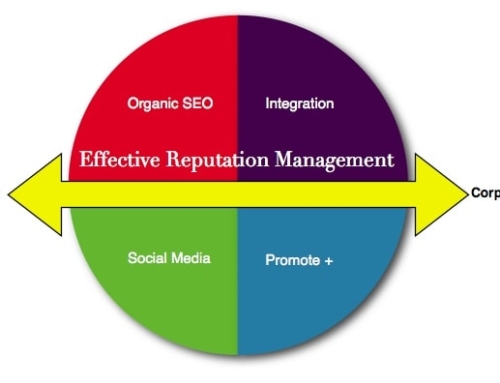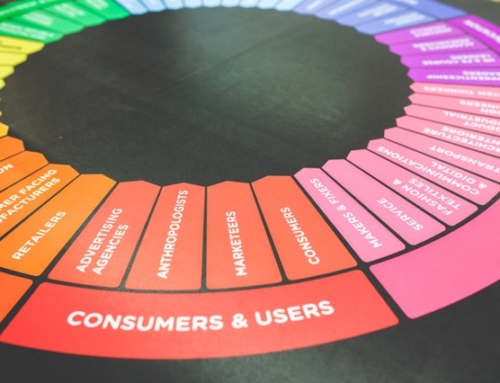Today’s business landscape is different than it was in the pre-internet era. Consumers can find out information about businesses with a couple of clicks. Studies show 90 percent of consumers look at online reviews before making a purchase, and 67 percent say the information they found directly influenced their decisions. How your company appears online has a massive impact on your earning potential. Research shows one negative result on the first page of Google causes a company to lose 22 percent of their potential business. Digital reputation management is crucial not only for brands but for their executives and employees as well. Having a reputation management system in place protects you from losing business due to negative results.
Now that you understand why personal online reputation management is important, let’s cover the five-step reputation management system we use to turn your online presence from a liability to an asset.
Step 1: Audit Your Online Reputation
According to the Edelman Trust Barometer, over 65 percent of Internet users see online search as the most trusted source of information about people and companies. This is a problem for 63 percent of CEOs, as that is the percentage of CEOs who are distrusted by consumers. Personal online reputation management is how you build and maintain trust with consumers in the digital age. That’s why the first step of our reputation management system is auditing your online reputation.
Type your name into Google and make note of the results on the first page. Are there any negative results?
Other tools to broaden your search for both positive and negative publicity include:
- Social media analytics
- Monitoring blogs that follow your work
- Twitter feeds
- Forums that cover topics either you or your business are involved with
Once you audit your online reputation, you can make the first move towards building your digital reputation management strategy.
Step 2: Own Your Domain Name
You most likely already own the domain name for your business, but do you own the domain for your name? If you don’t you need to buy it immediately.
Use domain search engines and registry companies such as GoDaddy to assist you with your searching. If you have the option, try to get a dot-com domain address first, as the major search engines still give preference to these extensions over others. Use this domain name to create a site where you share the best aspects of yourself. Some examples include:
- A list of your key skills and accomplishments
- Customer, client, or peer testimonials
- Articles showcasing your expertise
If you’re a business, your company’s website needs to be more detailed and should include complete information about the business and its products and services, along with regular blogs and articles that are relevant to your industry.
Create a great website by using tools like WordPress, Tumblr, or About.me. Choose from their collection of templates and put together a smart, professional-looking web page. After you have your domain name and design, you need to fill it with quality content on a consistent basis.
Step 3: Create and Execute a Content Strategy
According to Adweek, 81 percent of consumers conduct online research before making a purchase. Digital reputation management isn’t just about making sure there is nothing negative for consumers to find. Smart business owners and entrepreneurs create interesting content on a consistent basis to positively influence consumers in their buying journey. Here are some ideas for good content:
- Quotes, anecdotes, statistics, and referenced information
- Videos and images rich with easy-to-decipher content
- How-to guides and informational articles
- Testimonials and personal anecdotes
- Biography and story of who you are
- Portfolio of your work
- Case studies of the results your business has achieved
- Updates on new products and services
Pages of your site should be updated frequently to show search engines that you’re “alive” and are providing up-to-date, relevant content for your audience. Aim to add new content at least twice a month. Consider outsourcing your content creation and marketing efforts. A digital marketing agency eliminates the guesswork you’d go through trying to figure out what type of content your audience finds valuable. They build and execute a content strategy based on extensive keyword research and SEO best practices.
If you receive an alert informing you about some negative post or article about the company or its products, you can post an article of your own that answers the negativity and clears it in the minds of the readers. The Edelman Trust Barometer says 63% of customers consider news on a person or company to be true if they hear it more than three times. This is why you need to constantly create quality content that showcases you and your business in the best possible light.
Step 4: Use Social Media Networks
Social media is one of most influential reputation management tools in any reputation management system. According to Touch Agency, roughly 80 percent of Tweets about businesses are negative or critical in nature. Customers are also five times more likely to post a negative experience about a company on social media than a positive experience. While this may sound discouraging, what it really means is you’ll get that much more benefit from positive sentiment.
Each of the following social media platforms has their uses in a holistic reputation management system:
As a business owner, you have to be on LinkedIn. Especially if you sell your products or services to other businesses. Having an active presence on LinkedIn also helps you recruit and retain better employees. Top talent researches a company’s CEO before applying to see if they are a person they would like to work for. In today’s social media-driven society, not having a LinkedIn presence is a red flag for potential employees.
When it comes to building relationships with new and existing customers, there is no social media platform better than Twitter. You can use Twitter’s advanced search feature to find people talking about things related to your area of expertise, and then jump into the conversation when it makes sense.
Facebook groups have become a powerful tool for building business relationships over the last year. A lot of brands have Facebook groups for their customers to not only talk about the brand but also with each other. Building a strong community is the goal. As a business owner, you can also participate in industry Facebook groups as part of your strategy to establish yourself as an industry authority.
Before you post anything on social media, make sure to complete the final step in our reputation management system.
Step 5: Consider How Your Digital Behavior Affects Your Reputation
If you don’t take steps to manage content about you online and attempt to suppress negative press, then this unflattering, publicly visible information can impact your business significantly. Keep this in mind before you publish images, posts, or any other information online. it’s never been easier for anyone to find out information about you. Make sure you aren’t adding any negative information to the conversation.
As a business owner, it is only natural to come across a few disgruntled customers who have a bad experience. Having a clear social media reputation management strategy provides you with a system for keeping these situations from escalating into something that damages your brand.
Get Serious About Your Online Reputation
Using our five-step reputation management system is guaranteed to build yourself up as an authority in your industry while generating more business opportunities through making a positive impression on potential customers. To recap, the five steps are:
- Audit you Online Reputation
- Own Your Own Domain
- Create and Execute a Content Strategy
- Use Social Media Networks
- Consider how Your Digital Behavior Affects Your Reputation
If you’re ready to implement a reputation management system but don’t have the time to do it yourself, contact us to see how we can help.











Leave A Comment